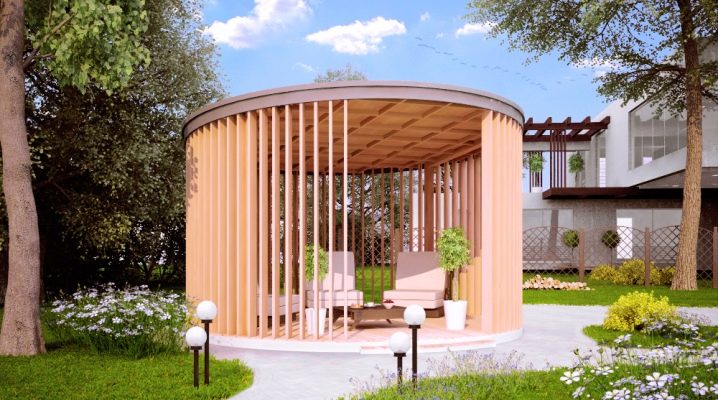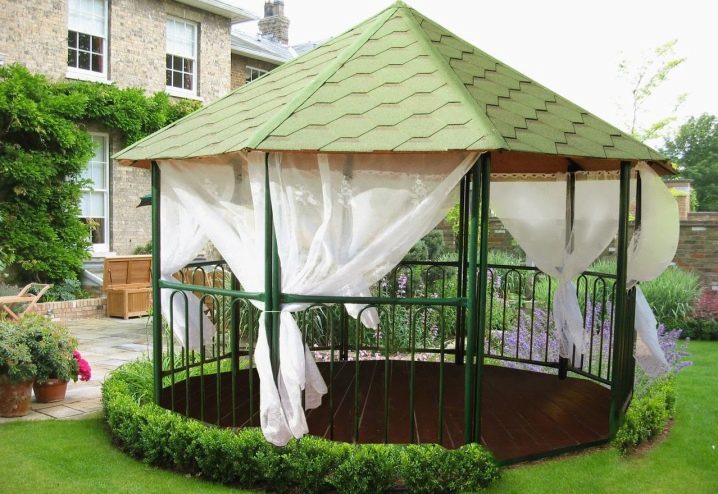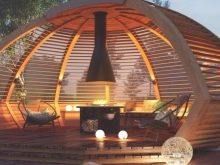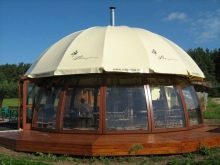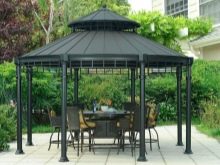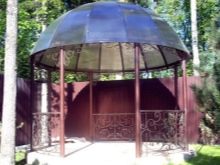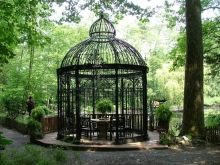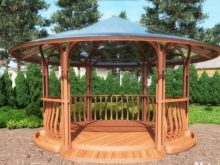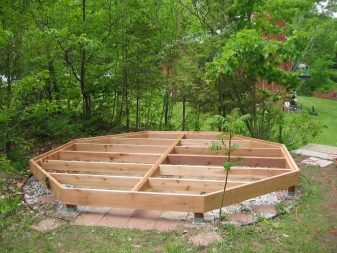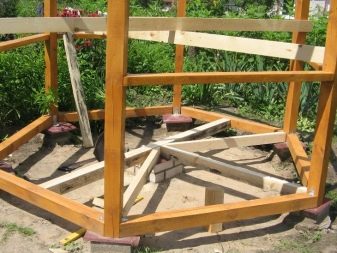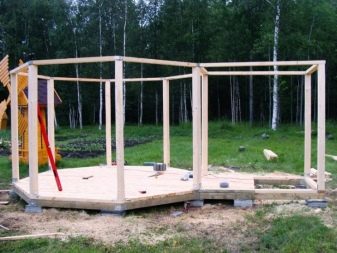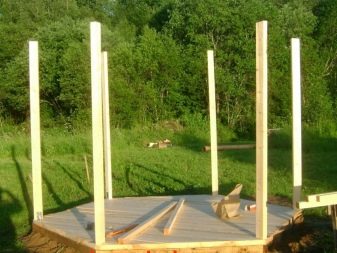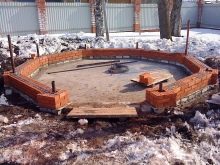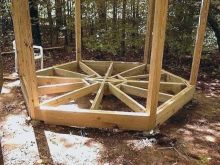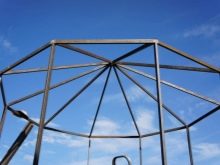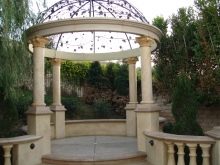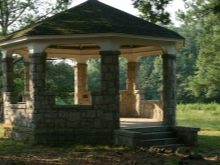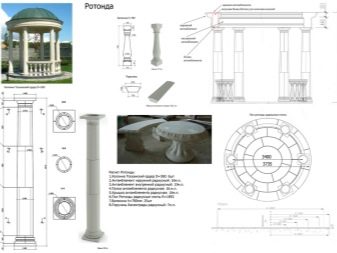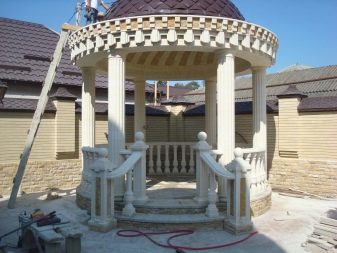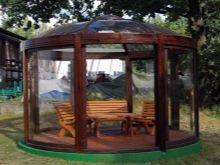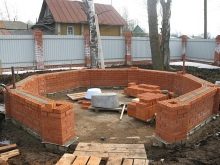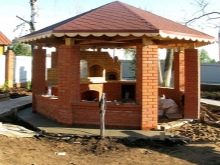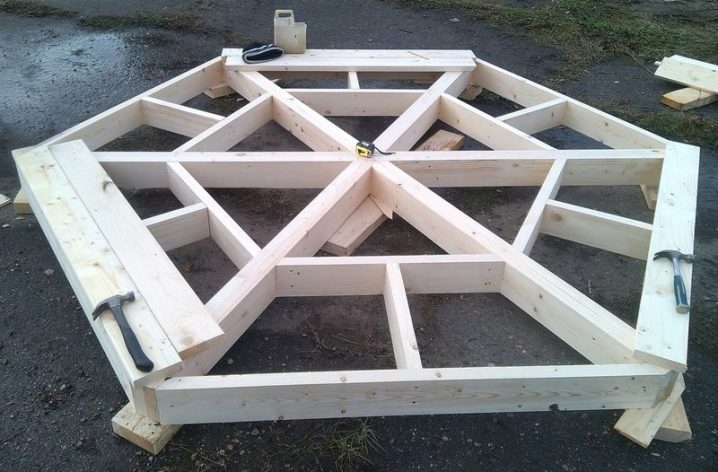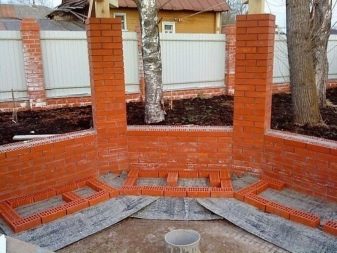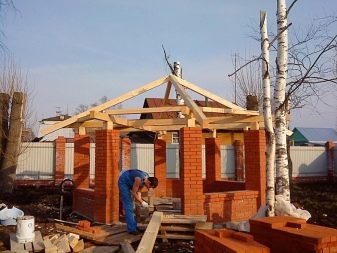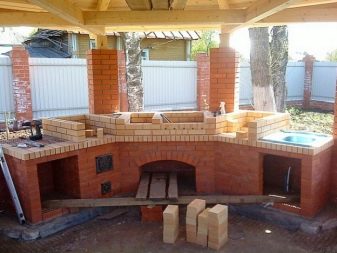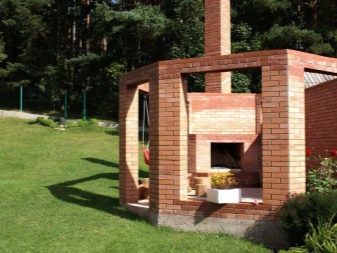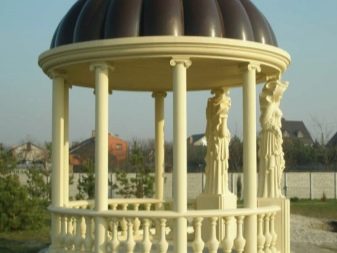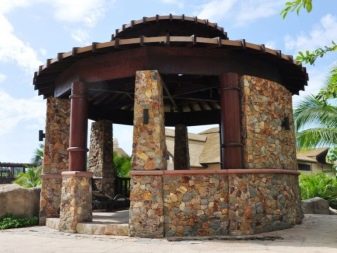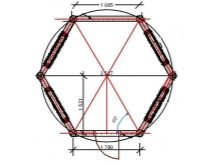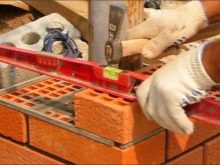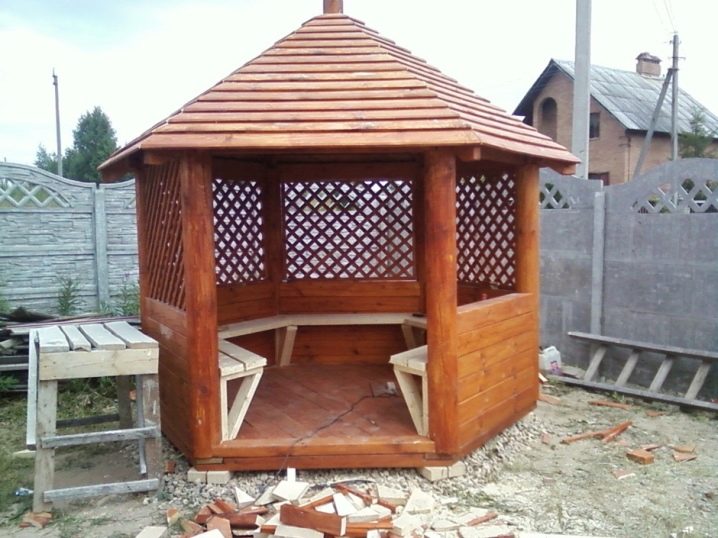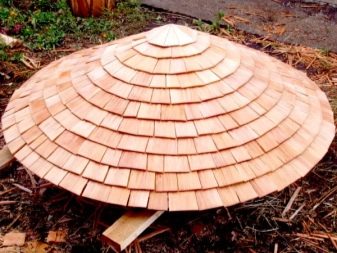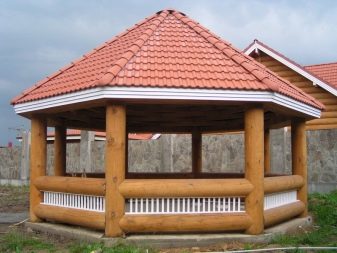Arbor: types and manufacturing
Arbor is an integral part of each cottage. In it you can relax, have a good time, as well as it perfectly performs an aesthetic function, decorating the site. They are also used in the design of yard areas, recreation parks and other public places.
Kinds
There are a large number of varieties of arbors, distinguished by both the shape of the structure and the types of materials from which they are constructed. Each of them has its advantages and disadvantages.
According to the constructive type, the following types of arbors are distinguished:
- circle or semicircle shape;
- rectangle or hexagon;
- the capital and facilitated summer arbors;
- gazebos having a roof covering in the form of an awning, a dome, a usual flat roof.
Features arbors
At construction of arbors use the following types of materials:
- metal;
- brick;
- tree.
It should be noted that the choice of the form of an arbor does not depend on the type of material from which it will be made.
A circular gazebo follows the shape of a polygon, so its frame is usually made in the form of a hexagonal or octahedron. The number of faces is determined depending on the size of the building.
To achieve a certain form of an arbor, it is necessary to consider the following points. If you need to get a gazebo of round shape, then the spans between the racks must be filled with straight objects. If it is required to build a rotunda or a gazebo, made in the shape of a semicircle, then the space should be filled with spherical material. This nuance must be taken into account when erecting not only the walls, but also the roof, which allows, depending on the choice of the type of filling, to get a roof in the shape of a dome or a cone.
Before building the foundation, it is necessary to accurately determine the mass and size of the building, since the type of foundation will depend on this.
The easy summer arbor can be built without the base. But if you still need to build a large enough building of materials such as brick or timber, then you need to perform a fairly strong and high-quality foundation.
Initially, only rotunda were built., but after a certain period of time due to this type of pavilions round structures appeared.
In the parks and in the territories where the estates are located, the ideal solution would be the construction of an arbor for a garden or a semicircular arbor. Rotunda made of brick or decorative finishes have become more common.
The easiest way is to build a brick arbor. With the use of materials such as wood or metal, construction is complicated by the presence of curved parts of the building, which must be subsequently filled.
Also, when building a wooden structure, the bends of arches bend at the plants. for the processing of wooden products. For bending, peeled or planed veneer is used. They come from the following tree species: birch, alder, poplar, ash and maple. The best of them in plastic is birch.
Wooden round arbors can be assembled by hand only from finished parts, since the wood is subjected to hydrothermal treatment to obtain a curvilinear shape.
Parts of arches, roofs and spill filling elements are rounded in wooden arbors.
The same problems apply to metal as to wood, therefore, in the manufacture of metal arbors, parts will also be factory-made, since forging at home is impossible.
How to build a rotunda?
The rotunda is one of the most expensive types of arbors, but it can also be attributed to the most respectable and durable option.
The main part of such an arbor is the columns, which can be made of the following materials:
- bricks;
- stones;
- monolithic block.
For the construction of the column, the material is poured into the so-called split formwork, which has a special internal coating. According to the standard, such additional equipment is made of moisture-resistant drywall.
Also on sale can be found prefabricated columns, the main component of which is cement or polymerized gypsum. An alternative to columns can make piles made of concrete and having a circular cross section. These elements will simultaneously serve as the foundation.
This method of erecting a rotunda is used only when it is demanded by the ground or if piles for a structure being erected, for example, a house, are laid at the site along with the columns.
It should be noted that when buying a factory set of the rotunda, the assembly instructions are attached to it. Also, many manufacturers give their own advice on the design of the base.
There are variants of the rotunda, in which the foundation is not needed. They are also called self-supporting rotunda. Naturally, this version of the arbor is more expensive. This kit also includes a balustrade with figured balusters and a fiberglass dome - this composition will give your rotunda a special look.
If it is decided not to resort to the help of professionals and make an arbor on their own, then the brick will be the most favorable material for this.
Supports are used if necessary - they are required for good stability of the building. In a specific situation, the most practical option would be to use a columnar foundation, which is made of waste ceramic bricks.
How to make support?
At the initial stage, it is necessary to make a division of the site, apply markings along the entire contour of the structure, and then proceed to the excavation work. The marking is applied to comply with all the required proportions, as well as for the process of correctly determining the placement of the pillars under the foundation, and hence for the columns of the building.
In order to proceed to the work described, it is necessary to determine the dimensions of the rotunda and to mark the ground using them, namely: apply a circle with a radius of an arbor. Then you should put a rectangle in it. The generally accepted standard rotunda dimensions are 4 m in diameter, which corresponds to 6 columns. From this it follows that the hexagon must be applied to the ground.
Before starting to develop the soil, it is necessary to install small pegs in the corners of the hexagon. Then you need to make a notch in the ground with a depth of 1-1.2 meters - this is necessary to install the pillars under the foundation, after which work is carried out with the bottom of the pits. They wake up for 20 cm with a mixture of sand and gravel and cover with a waterproof film. After this begins the laying of the pillars.
The number of bricks in one row depends on the massiveness of the structure, on average from 4 to 6 bricks are taken. The space formed between the bricks and reinforcement bars should be filled with mortar.
When working with vertical surfaces, it is only necessary to process them with hot bitumen or use liquid glass. It is also recommended to add various types of additives that will protect the surface from water ingress and make it resistant to low temperatures.
Layout of the columns is possible from silicate or ceramic bricks. In order to avoid wasting time on decorating columns, you should immediately pay attention to the shape of the brick. If it is decided to make columns of a cylindrical shape, then it will be most convenient to use shaped brick. It has distinctive features and therefore is used in other types of work. The construction of columns is performed in the same way as the foundation columns.
Rotunda dimensions usually have the following parameters: the dome has a height of 4.5 to 4.8 m, columns have a size of 2.8 to 3 m. The rest of the rotunda is the roof. These dimensions are valid with a diameter of 4 m.
The rotunda is divided into two types:
- with columns;
- with openings in the walls.
When building a rotunda with columns, it is necessary to pour a foundation between them. If the method is used with openings in the walls, they are usually built in the form of an arch.
When building an arch of brick, you will have to resort to the use of special formwork, called the "circle". It is placed with the support on the walls, and then spend wedging. When laying the lintel, a separate type of brick is used - a wedge brick.
The opening in the edges can be from 10 to 20 mm, which allows for the laying of arches with different radii. If during the formation of arches using ordinary brick, the shape is achieved by thickening the seams on one side.
Sufficiently experienced builders can pillar the columns with formwork, or replace it with brickwork. It will be easier for a beginner to build it from metal.
Also need plastic slats. They must be used when carrying out crates under the roofing material.
When using a wooden bar, it is best to resort to its polymer analogue, since it bends much easier, which saves time. These elements must be folded in two or three rows, and then screwed, like regular shingles, with self-tapping screws.
Then it remains to find a suitable roofing type of material. The best for this business is roofing tiles.
The easiest way is to order the finished roof. It will only install on the prepared columns.
The finishing stage in the construction of the rotunda is the decoration and decoration of columns.Here you can resort to plaster to make them look like marble, or use a variety of existing decors. Ratonda with a brazier inside looks very good in the center of the site, which will decorate landscape design.
Step-by-step assembly on the assembly of a round gazebo from a bar you can watch in the video below.
